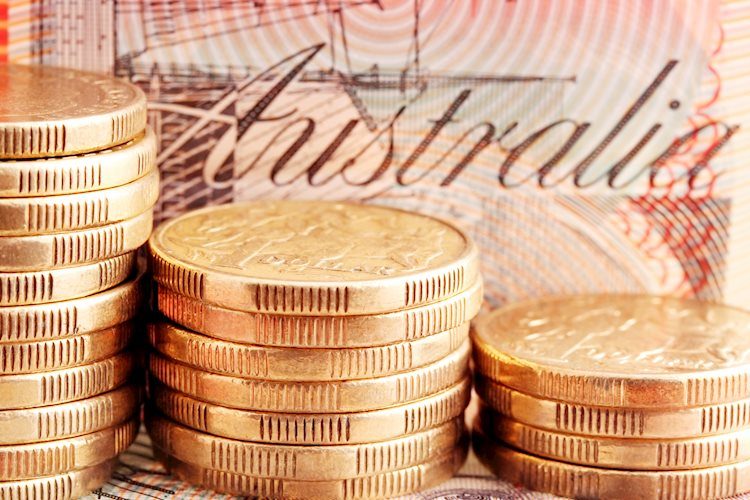- Aussie mildly rose to 0.6510 in Friday’s session.
- Gains in the Aussie pair are influenced by broad-based US Dollar weakness.
- Aussie finds support but faces pressure from trade war concerns between China and the US.
The AUD/USD pair extends gains for the third straight day on Friday, although it has trimmed a portion of its intraday gains and holds above the 0.6500 psychological threshold. The pair recently reached a multi-day high before retracing some of its intraday gains. The positive momentum in the pair is influenced mainly by broad-based US Dollar weakness.
Despite showing signs of resilience and gaining, the US Dollar remains under pressure against most major currencies. The weakness in the US Dollar is primarily due to dovish comments from Federal Reserve Chairman Jerome Powell, who hinted at a pause in the US interest rate hiking cycle. This has led market participants to speculate that the Fed may not raise interest rates as aggressively as previously anticipated.
Daily digest market movers: Australian Dollar mixed, trade war concerns limit the upside
- AUD/USD is maintaining its upward trend for the third consecutive day despite a slight pullback in intraday gains.
- The AUD/USD pair reversed early gains and trades mixed around 0.6500 amid concerns over the US-China trade war.
- The US is set to unveil further AI chip sanctions against China as early as Monday, which is weighing on the AUD/USD due to risk-off market sentiment.
- This week, the AUD has gained support due to weakness in the USD, despite mixed Australian economic data and a hawkish Reserve Bank of Australia.
AUD/USD technical outlook: Outlook improves as bulls gain momentum, indicators signal further gains ahead
The AUD/USD pair continued to gain ground and approached the 20-day Simple Moving Average (SMA) but faced rejection. However, the outlook remains positive as bullish momentum continues to build.
The AUD/USD pair is likely to find support at the 20-day SMA and the ascending trendline from the August low. On the upside, immediate resistance is at 0.6550 and 0.6600 areas. A break above this resistance area could lead to further gains toward the 0.6700 mark.
RBA FAQs
The Reserve Bank of Australia (RBA) sets interest rates and manages monetary policy for Australia. Decisions are made by a board of governors at 11 meetings a year and ad hoc emergency meetings as required. The RBA’s primary mandate is to maintain price stability, which means an inflation rate of 2-3%, but also “..to contribute to the stability of the currency, full employment, and the economic prosperity and welfare of the Australian people.” Its main tool for achieving this is by raising or lowering interest rates. Relatively high interest rates will strengthen the Australian Dollar (AUD) and vice versa. Other RBA tools include quantitative easing and tightening.
While inflation had always traditionally been thought of as a negative factor for currencies since it lowers the value of money in general, the opposite has actually been the case in modern times with the relaxation of cross-border capital controls. Moderately higher inflation now tends to lead central banks to put up their interest rates, which in turn has the effect of attracting more capital inflows from global investors seeking a lucrative place to keep their money. This increases demand for the local currency, which in the case of Australia is the Aussie Dollar.
Macroeconomic data gauges the health of an economy and can have an impact on the value of its currency. Investors prefer to invest their capital in economies that are safe and growing rather than precarious and shrinking. Greater capital inflows increase the aggregate demand and value of the domestic currency. Classic indicators, such as GDP, Manufacturing and Services PMIs, employment, and consumer sentiment surveys can influence AUD. A strong economy may encourage the Reserve Bank of Australia to put up interest rates, also supporting AUD.
Quantitative Easing (QE) is a tool used in extreme situations when lowering interest rates is not enough to restore the flow of credit in the economy. QE is the process by which the Reserve Bank of Australia (RBA) prints Australian Dollars (AUD) for the purpose of buying assets – usually government or corporate bonds – from financial institutions, thereby providing them with much-needed liquidity. QE usually results in a weaker AUD.
Quantitative tightening (QT) is the reverse of QE. It is undertaken after QE when an economic recovery is underway and inflation starts rising. Whilst in QE the Reserve Bank of Australia (RBA) purchases government and corporate bonds from financial institutions to provide them with liquidity, in QT the RBA stops buying more assets, and stops reinvesting the principal maturing on the bonds it already holds. It would be positive (or bullish) for the Australian Dollar.
Read the full article here

